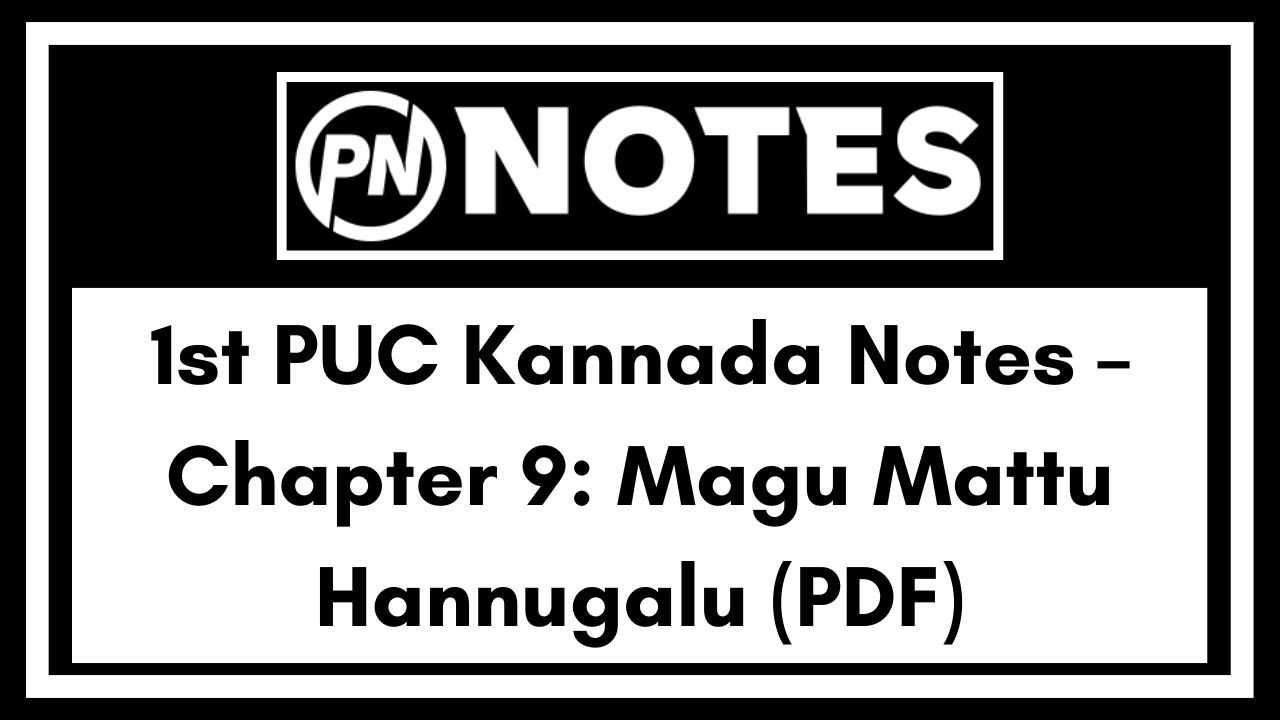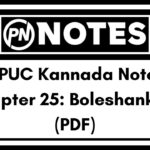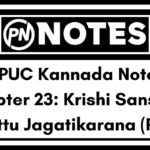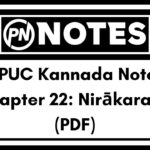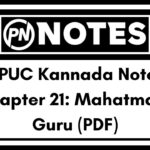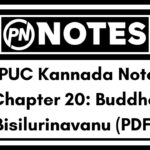Welcome to a different important submit in our 1st PUC Kannada Notes sequence. On this submit, we’ll talk about Chapter 9: Magu Mattu Hannugalu, a heartfelt poem that delves into the deep bond between a mom and her little one, exploring themes of affection, sacrifice, and emotional depth.
Written by the famend Kannada poet Gopalakrishna Adiga, this chapter brings to gentle the emotional intricacies of motherhood and the unconditional love a mom has for her little one. The poem displays on the struggles of a mom and the profound function she performs in shaping a baby’s life.
Chapter Overview: Magu Mattu Hannugalu
“Magu Mattu Hannugalu” interprets to “The Youngster and the Fruits”. The poem metaphorically explores the connection between a mom (magu) and her little one (hannu), specializing in the nurturing and sacrifice {that a} mom makes for the well-being of her little one.
By means of vivid imagery, the poet displays on how a mom’s love is usually in comparison with the nurturing and sacrificial act of giving. Simply as a tree bears fruit for the nourishment of others, a mom sacrifices her personal consolation to make sure the expansion and success of her little one. The poem sheds gentle on the selflessness and energy a mom demonstrates, typically with out receiving the popularity she deserves.
Central Message of the Poem
- Unconditional love and sacrifice outline a mom’s relationship along with her little one.
- A mom offers her time, power, and care to nourish her little one, typically at the price of her personal well-being.
- Selflessness and nurturing are important to the expansion of each the kid and the mom’s bond with them.
- The poem emphasizes that motherhood is an act of fixed giving and sacrificing, and the little one’s success is the final word reward for the mom.
Key Lines & Meaning
“Magu, mattu hannugalu, aagalu, jivana sooriyu”
– Which means: The kid and the fruits, they’re the essence of life’s sunshine.
This line fantastically captures the concept that a mom’s love (like the daylight) nurtures and shapes the way forward for her little one, permitting the kid to flourish simply as a tree offers fruit within the heat of the solar.
“Mattu magu hara nadiyalli, nintaru paalu jeevana”
– Which means: Within the river of life, the mom and the kid are like water and the shore.
This line suggests the deep interdependence between a mom and her little one, symbolizing the fixed circulate of care and help that the mom provides, with the kid rising and studying alongside the best way.
Why These Notes Are Important
These 1st PUC Kannada Notes will allow you to:
- Achieve a deeper understanding of the emotional bond between a mom and little one.
- Recognize the symbolism of sacrifice and selflessness depicted within the poem.
- Put together for short-answer and long-answer questions associated to the themes of affection, sacrifice, and motherhood.
- Discover the poet’s model of metaphorical language to convey advanced feelings in easy phrases.
Exam Preparation Tips for This Chapter
- Deal with the symbolism of the mother-child relationship and the way the poet compares it to the pure world (such because the tree and its fruit).
- Memorize key traces and be ready to clarify the deeper that means behind the metaphors used within the poem.
- Follow writing in regards to the emotional depth of the poem and the way it portrays unconditional love and self-sacrifice.
- Be prepared to clarify how the mom’s sacrifices assist the kid develop, and the mutual respect between the 2.
Final Thoughts
Magu Mattu Hannugalu is a fantastically emotional poem that explores the unwavering love of a mom and the sacrifices she makes for her little one’s well-being. By means of vivid metaphors, the poet illustrates the nurturing, selfless, and unconditional nature of motherhood. These 1st PUC Kannada Notes will allow you to perceive the deeper themes of the poem and put together successfully for exams.
More Resources:-
